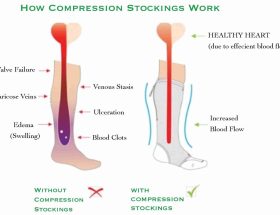Body Mass Index (BMI) is a widely used tool for assessing body composition and determining the degree of obesity. It is a simple calculation that takes into account a person’s height and weight. While BMI can provide a general indication of whether someone is underweight, overweight, or at a healthy weight, it is essential to understand its limitations before relying solely on this measurement. In this article, we will delve into the concept of BMI, its calculation, interpretation, and its flaws.
What is Body Mass Index (BMI)?
What is Body Mass Index (BMI)?
Body Mass Index (BMI) is a mathematical calculation that relates an individual’s weight to their height. It provides a value that is commonly used to categorize adults into different weight status categories, such as underweight, normal weight, overweight, or obese. The formula to calculate BMI is weight in kilograms divided by the square of height in meters (BMI = weight (kg) / height^2 (m^2)).
BMI Categories and Interpretation:
BMI Categories and Interpretation
Based on the calculated BMI value, individuals are usually categorized into the following weight status categories:
1. Underweight: BMI less than 18.5
2. Normal weight: BMI between 18.5 and 24.9
3. Overweight: BMI between 25 and 29.9
4. Obese: BMI equal to or greater than 30
While these categories provide a rough guideline, it is crucial to note that individuals’ health risks can vary within each category due to factors such as muscle mass, bone density, and distribution of body fat.
Limitations of BMI:
Limitations of BMI
1. Muscle Mass: BMI does not distinguish between fat mass and muscle mass. As muscle weighs more than fat, individuals with high muscle mass, such as athletes or bodybuilders, may be classified as overweight or even obese, despite having a low percentage of body fat.
2. Body Fat Distribution: BMI does not consider where the body fat is located. Excess fat around the waist, known as visceral fat, carries a higher health risk compared to fat stored in other areas of the body. Therefore, two individuals with the same BMI may have different levels of health risks based on their fat distribution.
3. Ethnicity and Age: BMI was originally designed for white adults, and its accuracy in assessing individuals from diverse ethnic backgrounds is questionable. Additionally, as people age, their body composition changes. Older adults may experience muscle loss and an increase in body fat, which can result in an inaccurate BMI calculation.
4. Health Conditions: Certain health conditions, such as edema or fluid retention, can affect body weight without reflecting changes in body fat. Individuals with these conditions may have an inaccurate BMI measurement.
5. Differences in Gender: Men and women generally have different body compositions due to hormonal and genetic factors. A BMI of 25, which is categorized as overweight, may have varying implications for men and women.
Conclusion:
Conclusion
Body Mass Index (BMI) is a valuable tool that provides a quick and straightforward assessment of weight status based on height and weight. However, it is essential to recognize its limitations and not rely solely on this measurement. Understanding factors such as muscle mass, body fat distribution, ethnicity, age, health conditions, and gender helps in interpreting BMI accurately and making informed decisions about personal health and body composition goals. Remember, BMI is just one piece of the puzzle, and a comprehensive evaluation by a healthcare professional is necessary for a complete assessment of an individual’s health and weight status.








